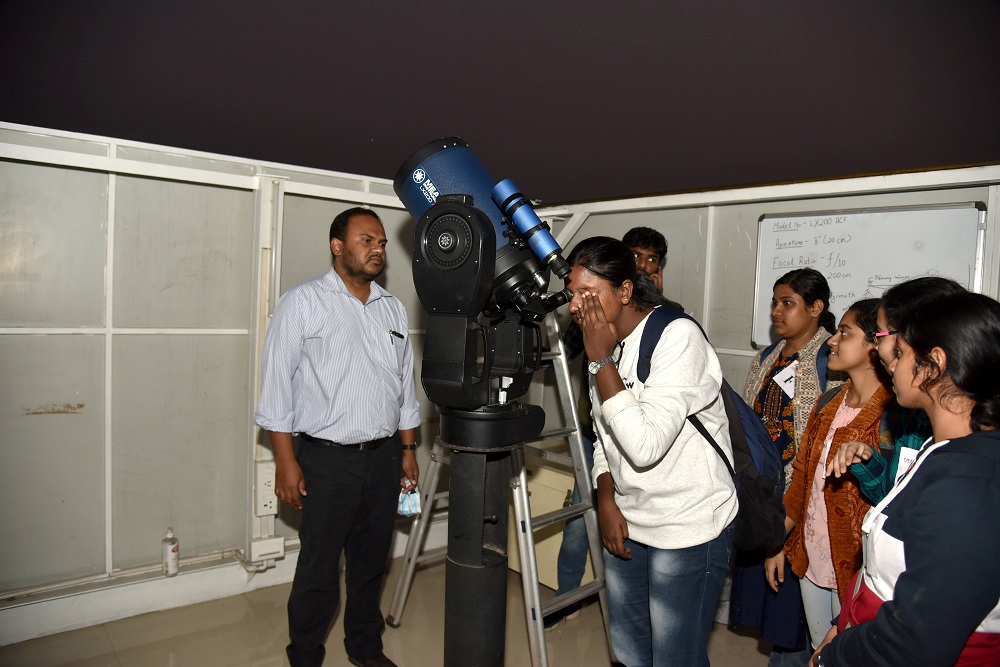High school, graduate, and postgraduate science students, budding research scholars, and physics teachers were exposed to cutting-edge scientific research work conducted by the S. N. Bose Centre for Basic Sciences during an “open day” organised on the occasion of the 129th birth anniversary of Prof. Satyendranath Bose.
A popular science lecture by Prof. Anirban Kundu, a Professor of Physics at Calcutta University, explained about dark matter, black holes, and Unified Field Theory organised to connect to the common people through the showcasing of some of the being done here.

Director Dr. Tanusri Saha Dasgupta gave an overview of the diverse areas of research being carried out at the Centre. The Dean, Dr. Amitabha Lahiri, reminded the audience that S.N. Bose’s seminal paper “Planck’s Law and Light Quantum Hypothesis” had been published in 1924. In these hundred years, science has progressed in leaps and bounds. S.N. Bose Centre has been keeping pace with the latest developments and, in many cases, leading from the front.
The visitors were taken to the Bose archive, where they were taken through glimpses of Bose’s life and work through pictures, letters, published papers, and artifacts, and also taken to the three laboratories. At the Nano lab, they saw how nanostructures are made using pulse laser deposition method, at the Scanning Electron Microscope lab, they saw how electron beams are used to ‘paint’ super magnified images of tiny objects, and at the X-Ray crystallography lab, they saw how X-Ray diffraction method is used for understanding arrangements of atoms in a crystal. X-Ray crystallography was one of the favourite areas of research pursued by S.N. Bose.

The visitors also got a glimpse of the Cray supercomputer at the supercomputing hub of the Centre. The last item in the day’s itinerary was a skywatch through the 8-inch telescope with a roll-off roof. The four celestial items on the menu were the moon, Jupiter and its four moons, Mars and Saturn. Most of the young visitors sighted craters of the Moon and the planets of Jupiter for the first time in their life.






























